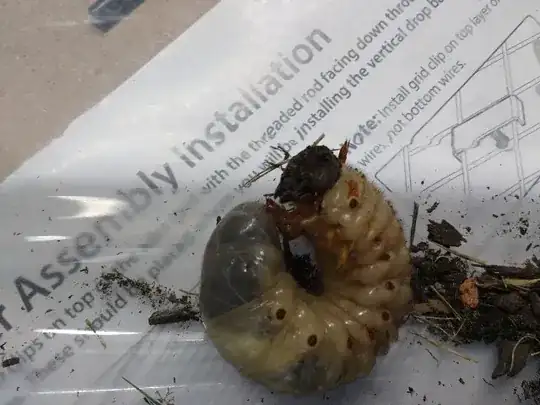It looks like a crane fly (Tipula paludosa) to me. They are also sometimes called leatherbacks.
The above linked article describes them as:
Wormlike with leathery sky, 1 to 1.5" long, hatching in Aug or Sept. They typically feed on the roots of a lawn (at least in the Pacific Northwest) throughout the winter. Lawns will show damage between December and May.
The adults (crane flies) emerge anytime from July to mid-October, and quickly lay eggs.
As for why the "grub control" did work, I'd suspect it was targeting a different life stage on the insect, but I don't deal with a lot in insecticided. There seems to be some indication that allowing your landscape to go partially into drought stress may reduce the numbers of larva.


